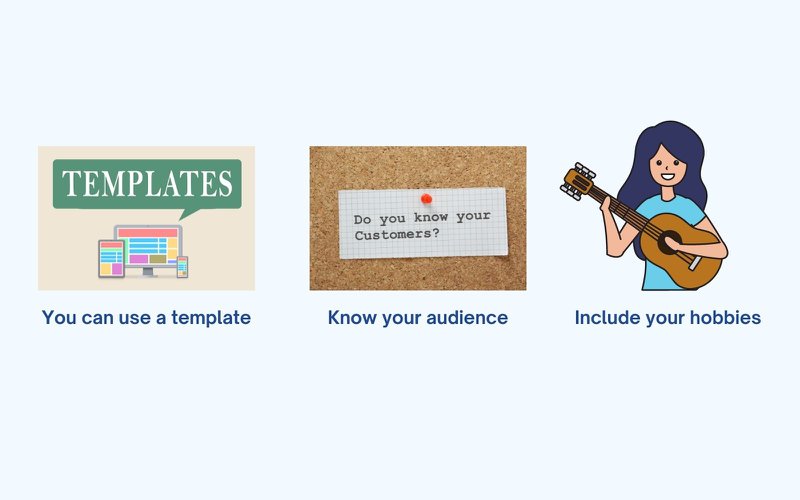A job search and a job switch are integral and inseparable parts of an individual’s career. The first step when embarking on this (sometimes arduous path) is to create the perfect resume. This piece will elucidate that part of the resume that needs to stand out at all costs – A professional background. But before we delve into the details of professional background, let us look at some reasons that make people quit their jobs.
Crafting one’s career is a journey that needs to be nurtured with the utmost care. Job switches happen for several reasons that include but are not limited to:
- Lack of communication with immediate managers
- Career stagnation / Lack of opportunity
- Lack of rewards and benefits
- Higher salary leading to greater financial stability
- Toxic company culture
- Lack of transparency from senior leadership
So in this article, we talk about it all, from what professional background is and how it helps nurture your career. For now, let’s take a look at the journey of a job search.
How to Go About a Job Search

There are several questions that you need to ask yourself when you begin a job search. Some of these questions may be:
- Is this move in line with your overall career goals?
- Are you looking to continue in the same role?
- Do you want to continue in the same industry?
- What is the kind of company you want to work for?
- The salary that you are looking for
- If employee benefits matter the most to you?
- Are you willing to relocate for the proper role?
- What size companies are you looking to work for?
- Do you want different roles?
- Do you have enough relevant experience to switch careers
- Are there industry certifications that you have to complete to bring you on par with your peers?
- What are the current market trends for your field and industry?.
Once you have the answers to these questions, it gives your job search some much-needed direction, and it is finally time to begin the first step in earnest – preparing an impressive resume.
Share your resume with your network. Search for the right job on professional websites like LinkedIn and Monster. Sooner or later, you will end up landing a job that is just right.
What Makes up a Stellar Resume?

For your resume to stand out, it needs to contain these essential components:
- A professional background
- Job description paragraphs
- Accomplishment driven bullet points
- ATS Optimization
- Format for greater visibility
Job description paragraphs:
Make sure to add 2-3 sentences about your daily responsibilities in each of your previous stints. This helps the recruiter in forming a better idea of your skillset.
Achievement focused bullet points:
These will be the highlight of your resume. There is a simple way to go about writing these achievements-focused bullet points. All you need is:
- A Power Verb
- A task
- A result.
These points will have to be quantifiable as much as possible. This could be in terms of:
- Costs Saved
- Deals Closed
- Leads Generated
- Revenue
- Profits
- Time Saved
- Efficiency improved
While elaborating on these points in the actual interview, use the ‘STAR’ framework. This framework consists of four parts that are:
- S: Situation:
- T: Task
- A: Analysis
- R: Result
ATS Optimization:
The final step is to optimize your resume for ATS. ATS stands for Applicant Tracking System, and it is a system that organizations use to scan your resume and make sure that you are a good fit.
To optimize your resume for ATS, you have to pick and familiarize yourself with the firm’s terminology. Secondly, pick keywords and phrases directly from the job posting and transfer them into your resume. It is a highly positive sign for the employer that you are already speaking their language.
Format for greater visibility:
The first few seconds that a recruiter scans your resume are crucial, and hence your resume must be reader-friendly. Avoid the temptation of using charts, graphs, and tables, as they will not get your resume past the ATS.
Wait- what about the first section, you ask? Well, that is what the rest of this blog is dedicated to.
Professional Background – Definition and Components
Professional background summarizes your professional experience and relevant personal information such as interests and passions. You can think of it as a career blurb or like your written elevator pitch.
Professional background is something that you’ll use throughout your career to seek better opportunities. It forms the core of your resume, and a well-written professional background can be the difference between landing your dream job and losing it.
A professional background should contain the following information:
- Names of your previous employers
- Duration of each job or internship stint
- Previous job titles
- Your responsibilities and their quantifiable impact
- Relevant education and training such as certifications
- Core competencies
- Accomplishments such as awards and promotions
Even if you are a candidate with little or no work experience, you need a high-quality professional background section to enhance your chances of getting a job.
Since this will be a professional background that will not be heavy on previous work experience, it will require some creative thinking on your part. You can include details that showcase your commitment and work ethic, such as:
- Volunteer work
- Freelance work
- Contract work
- Fundraising
- Scouts
- Even dog walking or babysitting!
- Positions of responsibility in a club or society in college
You should also include a few attributes that make you a good hire. This will help you grab your employer’s attention, along with the reasons you are passionate about working in a specific industry or company.
How to Write a Professional Background?

1) Don’t overthink the frills
While starting to work on your resume, especially the professional background section, use a template so that you can focus on the substance, that is, your work and accomplishments, without worrying about the structure and formatting.
2) Know your audience
It is essential to know the audience that you are writing for and draft your professional background accordingly. You should have different versions of your professional background for your resume, social media profiles, website, or blog.
3) No objective statement
Yes, you heard that right – No objective statements. Instead of telling an employer what you expect from a position, emphasize what you bring to the table and how you can add value to the organization.
4) Start with a professional title
Begin your professional background with a title that highlights your current position or the position you would like to hold in your new role. Add a power verb for that extra impact. An example of such a title would be, A result-driven marketing manager.
5) Focus on your most remarkable achievements
With the title of your professional background in place. It would be best if you shifted your focus to some of your best accomplishments. Here you must demonstrate your key competencies and outcomes, and you must also explain succinctly how your work experience and educational qualifications make you the perfect candidate for the job.

6) Include your hobbies
Hobbies and other fun facts about your abilities can be a great icebreaker. They also help the recruiter connect with you as a person and understand that you have a life outside of work.
Your hobbies can also showcase your qualities such as creativity, perseverance, and consistency. These are valued by employers everywhere.
So if you can solve a Rubik’s cube in 30 seconds or like to collect rocks, don’t hesitate to put it on your professional background. A little personal touch can help you stand out from your peers.
7) Conclude with your USP
When ending the professional background section, draw attention to an exclusive skill or an area of expertise. This is the icing on the cake and provides that extra reason for an employer to hire you.
In Closing: How Does a Professional Background Help?

You must be wondering- What is all the fuss about a personal background? Here’s how a professional background helps your resume.
You get noticed faster.
Recruiters have hundreds of job applications to go through. So it’s only natural that they spend only a few seconds scanning each one. A well-drafted professional background will make it easier for employers to decide whether you are a good fit for the job.
Reduces complexity.
A clear and concise professional background highlighting your essential skills, experiences, and achievements helps remove ambiguity and complexity from your resume. This is especially helpful if you are vastly experienced. The employer prioritizes your resume if he finds it easy to read and spot what he is looking for.
Captures Keyphrases and Keyphrases.
The professional background section in a resume presents you with an opportunity to be on the recruiter’s radar by including keywords and phrases from the job posting. You can achieve this by adding keywords from the job posting where you meet most of the criteria to the core competencies section of your professional background.
To ensure that crafting a professional background is not a futile exercise, it has to be the right mix of creativity, dedication, and expertise.

Ranu Kumari is a Professional Writer and a Marketing enthusiast who currently runs her own Marketing Consultancy, LatitudeBOX. She has written promotional articles for multiple brands and has published her work in Scopus indexed journals. She is passionate about expressing her thoughts and ideas to connect with her readers in a voice that they understand.
